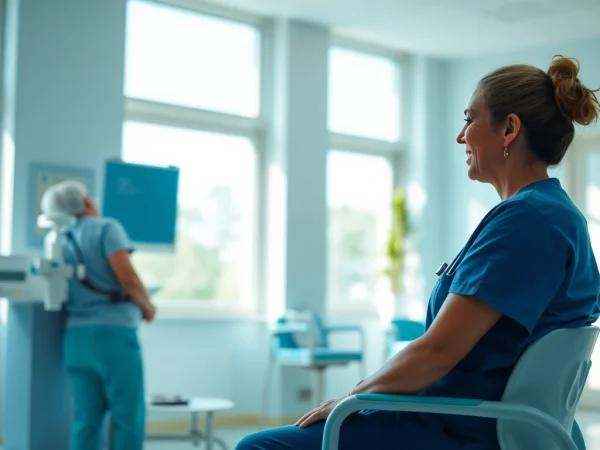Understanding Vaginal Warts: Symptoms, Causes, and Treatment Options
What are Vaginal Warts?
Definition of Vaginal Warts
Vaginal warts are growths that appear in the genital area, primarily caused by certain strains of the human papillomavirus (HPV). These warts can vary in size, shape, and color, and may appear as small bumps or larger cauliflower-like clusters. They are considered a form of genital warts, which can affect both sexes, but the presentation in women often includes the vaginal area. Understanding these manifestations is crucial as they can indicate the presence of HPV, a common sexually transmitted infection.
How Vaginal Warts Develop
The development of vaginal warts occurs following infection with HPV. The virus enters the body through micro-abrasions in the skin or mucous membranes during sexual activity. Once inside, the virus can remain dormant for extended periods, and some individuals may never develop visible warts. Factors such as a weakened immune system, smoking, and concurrent infections can trigger the emergence of warts. The incubation period varies, with symptoms appearing weeks to months after exposure, revealing the silent nature of HPV.
Common Symptoms of Vaginal Warts
Symptoms associated with vaginal warts can include:
- Small, flesh-colored or gray lumps
- Cauliflower-like clusters
- Itching or discomfort in the genital area
- Bleeding during intercourse
- Increased vaginal discharge
While some individuals may experience discomfort, others may remain asymptomatic, complicating timely diagnosis and treatment.
Causes and Risk Factors of Vaginal Warts
Human Papillomavirus (HPV) Overview
The human papillomavirus is a diverse group of over 200 related viruses. Among these, types 6 and 11 are primarily responsible for causing genital warts, including vaginal warts. HPV is predominantly transmitted through skin-to-skin contact during sexual activities, which makes it one of the most common sexually transmitted infections globally. Most sexually active individuals will encounter HPV at some point in their lives.
Transmission Methods for Vaginal Warts
Vaginal warts are transmitted through direct contact with infected skin or mucous membranes. Potential methods of transmission include:
- Vaginal, anal, or oral sexual intercourse with an infected person
- Non-penetrative sexual activities, including genital-to-genital contact
- Sharing of sex toys
It is important to note that HPV can be present even if warts are not visible. Therefore, individuals may unknowingly transmit the virus to partners.
Personal and Environmental Risk Factors
Several factors can increase the risk of developing vaginal warts, including:
- Multiple sexual partners: Greater exposure increases the risk of contracting HPV.
- Weakened immune response: Conditions like HIV/AIDS or the use of immunosuppressive medications can heighten vulnerability.
- Smoking: Tobacco use has been linked to an increased risk of HPV-related warts.
- History of other sexually transmitted infections (STIs): Having one STI can elevate the chances of acquiring another.
Diagnosis of Vaginal Warts
Medical Examination Techniques
Diagnosis of vaginal warts typically begins with a thorough medical history and physical examination. During the examination, a healthcare provider will assess the genital area for the presence of warts and other abnormalities. Sometimes, a visual inspection is sufficient for diagnosing warts, while in other instances, further examination methods may be employed.
Tests for HPV Detection
In certain cases, healthcare providers may recommend additional testing to confirm the presence of HPV. This may include:
- Pap tests: To detect cervical changes caused by HPV.
- HPV DNA tests: These can identify high-risk HPV types.
Such tests are critical in assessing the risk of cervical cancer stemming from high-risk HPV types.
When to Seek Medical Help
If you suspect the presence of vaginal warts or experience symptoms such as unusual growths, bleeding, or increased vaginal discharge, it is important to seek medical attention promptly. Early diagnosis and treatment can mitigate discomfort and reduce potential complications.
Treatment Options for Vaginal Warts
Topical Treatments and Procedures
Treatment for vaginal warts can involve a variety of options, depending on the size and number of warts. Common methods include:
- Topical medications: Such as imiquimod and podofilox, which are applied directly to the warts to help shrink or eliminate them.
- Cryotherapy: Freezing the warts with liquid nitrogen to destroy abnormal tissue.
- Electrocautery: Using electric current to burn off the warts.
- Laser therapy: Employing focused light beams to remove larger and more resistant warts.
It is worth noting that while these treatments can reduce the appearance of warts, they do not eliminate the underlying HPV infection.
Preventive Measures and Vaccination
One of the most effective ways to prevent viral infections that cause vaginal warts is through vaccination. The HPV vaccine protects against the most common high-risk HPV types, significantly lowering the risk of developing warts and related complications, including certain cancers. Other preventive measures include:
- Using condoms during sexual activity to reduce the likelihood of transmission.
- Engaging in monogamous relationships or limiting the number of sexual partners.
- Regular gynecological check-ups, including Pap tests.
Managing Recurrences of Vaginal Warts
Recurrences of vaginal warts are common, even after treatment. Therefore, it is important to maintain regular follow-up appointments with a healthcare provider and to implement preventive measures. Emotional support and counseling may also prove beneficial for those experiencing distress due to recurrent warts.
Living with Vaginal Warts
Impact on Sexual Health
Vaginal warts can significantly impact an individual’s sexual health and well-being. The presence of visible warts may lead to decreased sexual desire, anxiety, and feelings of shame or embarrassment. Open communication with partners, along with education about HPV and its effects, can foster healthier relationships and alleviate concerns.
Emotional and Psychological Considerations
Beyond the physical manifestations of vaginal warts, the emotional toll can be substantial. Individuals may experience anxiety regarding their diagnosis, fears about transmission, and concerns about relationship dynamics. Seeking support through counselling or support groups can help individuals share experiences and receive guidance in coping with these emotional challenges.
Support Resources for Affected Individuals
For those affected by vaginal warts, various resources can provide assistance, including:
- Healthcare professionals who offer medical advice and treatment options.
- Support groups available online or in-person.
- Educational websites that provide information on HPV and sexual health.
Empowerment through education can enable individuals to navigate the complexities of living with vaginal warts and enhance their overall health outcomes. If you are looking to gain more insights into vaginal warts, you can find comprehensive resources available at Vaginal warts.










